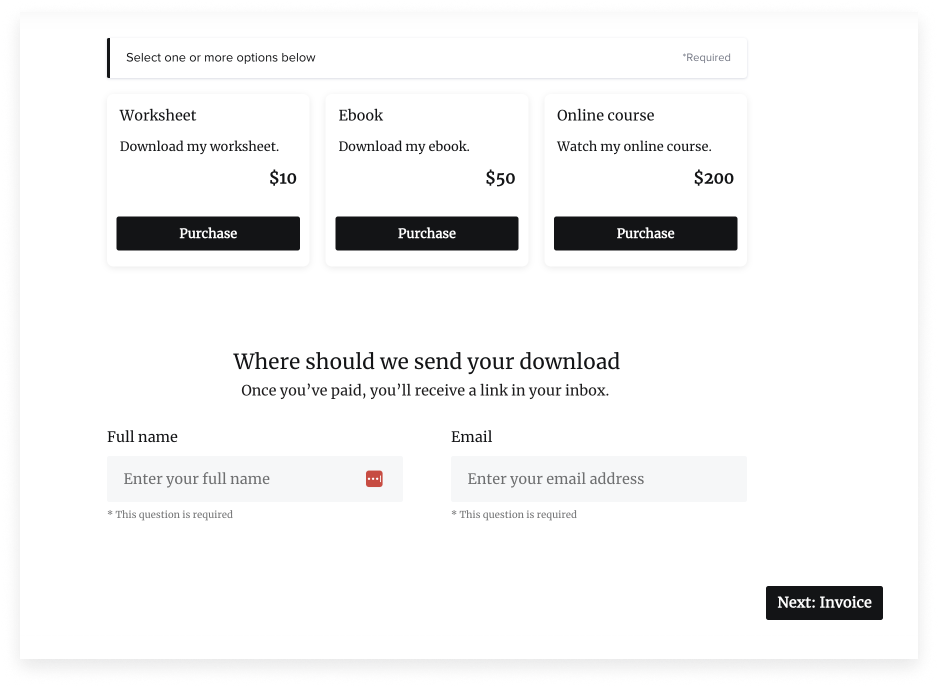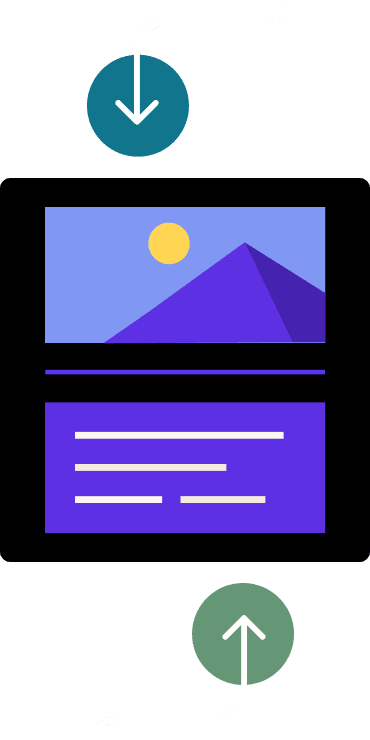Discover how to diversify your service-based business with digital products that align with your expertise. Learn about online courses, membership programs, and exclusive content to generate passive income and deepen client engagement.
You’ve probably heard that digital products are the future, but they’re not. They’re already shaping the present. With over $54 billion in digital product sales each year—a figure that’s set to soar to $74 billion by 2025—embracing digital products could significantly bolster your income. In fact, this market already eclipses traditional powerhouses like movie box offices and recorded music revenues.
And if you think that’s impressive, consider this: the e-learning market, closely tied to online brands’ digital offerings, is heading toward an astounding $325 billion by 2025. By leveraging this trend now, you’re setting yourself up for success in an increasingly digital-first economy.
For service-based entrepreneurs, integrating digital products into your offerings isn’t just smart; it’s strategic. Create an asset once and sell it repeatedly without additional work—that’s the allure of passive income through digital products.
The key is alignment: your digital product strategy should complement your services, creating a cohesive brand experience for your clients. Plus, managing both your services and downloadable products on a single platform makes it easier to track your total revenue.
Jump to:
- What are digital products?
- 5 digital product examples
- The pros and cons of selling digital products
- How to develop digital product ideas
- Simplify your work with digital products via HoneyBook
What are digital products?
Digital products represent a diverse category of goods that are sold and distributed in electronic format. Unlike physical products that you can touch and feel, these products exist as digital files that customers download or access online. They encompass a broad spectrum, from e-books and online courses to digital content like art and software tools.
Digital product ideas could be as boundless as your creativity allows. Interior designers can create downloadable products like virtual room design toolkits, or social media consultants might offer e-books about viral marketing strategies. Each digital download acts as a passive income stream and strengthens the bond between your brand and your audience through added value.
5 digital product examples
There’s a wealth of digital products to choose from, but let’s explore a few compelling examples. The ones below are popular for their feasibility in development and potential for high demand, making them ideal for entrepreneurs looking to expand into passive income avenues.
Online courses
Online courses offer structured educational content that delivers knowledge and skills. They can range from simple PDF downloads to fully interactive, video-based lessons with assessments and certifications.
To build an effective online course, you should focus on a few key elements:
- Identify the unique insights or processes in your field that you can teach. What do your clients frequently ask about? What are some common challenges they face that you can help resolve?
- Choose the right format for your content. Will it be text-rich PDFs, engaging video tutorials, or a mix of both? Decide on the delivery method that best suits your teaching style and material.
- Design a curriculum that is organized and progressive. Break down complex information into digestible modules and include clear learning objectives for each section.
- Incorporate interactive elements to keep learners engaged: quizzes, exercises for practical application, peer-to-peer discussion forums, or live Q&A sessions.
Creating an online course also involves certain technical steps:
- Select a platform to host your course. Options include dedicated LMS (Learning Management System) solutions like Teachable or Moodle. Depending on your course, however, you may actually not need one. One such scenario is if you decide on an email-based sequence of course delivery.
- Ensure high-quality production values for audiovisual materials—if you’re filming videos or recording audio lessons, professional editing can make a significant difference in learner engagement.
- Implement reliable assessment methods to track progress and certify completion. These might be automated quizzes for self-paced courses or assignment reviews if offering more personalized feedback.
Pro tip
Integrate each course’s teachings closely with your service offerings. Doing so not only reinforces your brand but also serves as a conduit, leading more clients toward your primary business services.
Digital downloads
Digital downloads are files that consumers can purchase and download directly to their devices. These include a diverse range of products like e-books, music tracks, digital art, photography, software, video games, and even documents such as industry reports or academic papers.
Creating digital downloads involves a process tailored to the type of product you’re offering:
- For digital art and photography, start with creating high-quality images using professional equipment or software. Then, decide on formats that ensure compatibility across devices and platforms.
- Musicians and podcasters need recording equipment or software to produce clear audio. Consider mastering services for polished sound quality before distributing your music tracks or podcasts through online stores or streaming services.
- Writers and researchers craft their e-books or reports with careful research and editing. Layout design tools can help create visually appealing pages that enhance the reading experience.
To efficiently manage digital downloads, consider the following:
- Set up an online store on platforms that specialize in selling digital goods or use existing marketplaces like Etsy for art, Amazon for e-books, or Bandcamp for music.
- Implement a content delivery network (CDN) to ensure fast and reliable download experiences globally. Of course, this consideration only becomes a factor at scale or when your learner base exceeds a certain number.
- Protect your work with appropriate licensing agreements and consider digital rights management (DRM) if necessary.
Remember that while there is no physical inventory involved in selling digital downloads, creating a system for managing sales—such as automated delivery upon payment—is crucial. This ensures immediate access for your customers while reducing your administrative workload.

Exclusive content
Exclusive content refers to digital products available to a select audience, usually subscribers or members. Examples include premium articles, behind-the-scenes videos, specialized webinars, in-depth market analyses, and members-only newsletters.
To create exclusive content that stands out and is valuable enough for customers to pay for it, consider the following steps:
- Pinpoint what premium value you can offer that isn’t already freely available. What insights or experiences can you provide that give your audience something they can’t get elsewhere?
- Develop high-quality content that aligns with your brand and resonates deeply with your target audience’s interests and needs. This could be in-depth guides, expert interviews, or advanced tutorials.
- Decide on the format of your exclusive offerings—whether it’s downloadable PDFs, streaming video series, audio files for on-the-go learning, or interactive webinars.
- Set up a delivery system that makes it easy for subscribers to access your content but protects it from non-members. Strongly consider using digital rights management (DRM) tools to safeguard your content.
Creating this type of content can foster a strong community and increase engagement rates among your most committed customers. However, it also requires careful thought into how you maintain its exclusivity without excluding potential new clients who might benefit from different tiers of access.
Pro tip
While crafting exclusive offerings provides an opportunity for higher-tiered pricing due to the added value these products bring, you’d want a balanced portfolio so all of your audiences feel catered to by your brand.
Templates
Digital templates are pre-designed frameworks or outlines that users can customize to suit their specific needs. They range from website design themes to social media post designs, invoice layouts, business plans, and email marketing sequences.
If you think templates are perfect for you, there are a few vital steps geared toward adding value for your clients:
- Start with identifying common tasks in your industry that could be simplified with a template. What do your clients repeatedly need that you can standardize? You can gather feedback from your existing clients on what types of templates they would find useful.
- Design for versatility. Your templates should be easily adaptable to fit a wide range of client needs while maintaining the integrity of the design. Use high-quality design elements that align with current trends but are timeless enough to provide long-term value.
- Focus on user-friendly customization. The more intuitive it is for your clients to personalize these templates, the more valuable they’ll find them.
- Consider using professional tools like Adobe Photoshop for graphic designs or Microsoft Word for document templates to ensure quality and compatibility. Test your templates thoroughly to ensure they work seamlessly across different devices and software versions.
In industries like photography or digital marketing, well-crafted templates can dramatically enhance efficiency and quality of work. By allowing room for personalization within a professional framework, you empower your clients while showcasing the value of your expertise.
Pro tip
Offer a variety of template packages tailored to different client needs. This demonstrates your understanding of diverse client challenges and provides multiple entry points into your service offerings.
Membership programs
Membership programs are ongoing, structured subscriptions that provide subscribers with a suite of benefits and content. Examples might include access to an exclusive podcast series, monthly coaching sessions, or a constantly updated library of resources tailored to specific industries like photography or marketing.
To create a successful membership program:
- Start by defining the unique value your membership will offer. This could be exclusive content, personal consultations, or access to specialized tools and resources.
- Select a platform that facilitates subscription management and content delivery. This might be through your website with integrated payment gateways or platforms specifically designed for membership services.
- Develop a content calendar that outlines what members can expect and when. This ensures consistency in delivery and helps maintain engagement over time.
- Set up community features such as forums or groups where members can interact with each other and with you. This builds a sense of community, which is essential for membership success.
When tailoring these memberships for service-based businesses, consider the rhythm and evolution of your clients’ needs. For example:
- A digital marketer may offer monthly trend reports and strategy webinars.
- A photographer could provide ongoing access to photo editing tutorials or seasonal lighting tips.
The key consideration is ensuring that memberships are not just about content but also about fostering an enriching environment where subscribers can grow with your business. It’s this symbiotic growth—where your members’ success feeds back into yours—that sets membership programs apart in the digital landscape.
The pros and cons of selling digital products
For service-based entrepreneurs, embarking on the journey of selling digital products offers both considerable advantages and some challenges.
Advantages of selling digital products
The most compelling benefit is, of course, the potential for an additional source of income. Unlike traditional services that require your time per client, you can create a digital product once and sell it repeatedly without much additional effort. This scalable source of revenue can supplement your active income remarkably.
Moreover, as mentioned earlier, digital downloads serve as an extension of your brand, helping to cement customer loyalty. By offering valuable content related to your services—be it a downloadable product like an insightful e-book or an exclusive webinar—you strengthen the relationship with your clientele by providing ongoing value.
Another upside is accessibility. Digital product examples span from templates for interior design layouts to social media strategy guides for marketers. Your clients will appreciate the convenience of instant access to tools that can help them succeed.
Challenges of digital products
The digital marketplace is crowded. Standing out requires not just quality but also a unique angle on familiar digital product ideas. It’s crucial that your offerings align with your existing service portfolio and truly address your customers’ needs.
Furthermore, the technical aspect can’t be ignored—ensuring secure payment gateways, download reliability, and customer support demands resources and planning.
Strategic considerations
For a service-based business like yours, take time to ponder the right mix of digital products. Always consider what complements your offerings and expertise as well as what your potential customers need. If you’re an acclaimed photographer, photo presets might be a hit. If you excel at organizing spaces as an interior designer, curated mood boards could be in demand.
Remember that success hinges on understanding what you’re capable of creating and what’s likely to generate recurring sales with minimal maintenance—the essence of passive income through digital means.
How to develop digital product ideas
Start by reflecting on frequent client inquiries or pain points—these often signal opportunities for digital products that can provide solutions and add value.
By aligning digital product ideas closely with your business’s core competencies, you create a cohesive ecosystem wherein every element complements the other, setting yourself up for sustainable success in today’s competitive market.
Pro tip
Lean into platforms capable of managing both services and digital products in one place. With HoneyBook, for example, you can sell both on the same platform to target different customers and upsell your current clients.
Simplify your work with digital products via HoneyBook
Embracing the world of digital products can be a game-changer for service-based entrepreneurs. From online courses that broaden your reach to membership programs that foster loyalty and stable income, there’s untapped potential waiting to be harnessed. It’s all about finding the right fit—a product that resonates with your brand and meets your clients’ evolving needs.
And when you’re ready to streamline this venture, HoneyBook is here to integrate the process. With tools like customizable lead forms that funnel into your sales pipeline and a platform that supports selling digital products directly, HoneyBook helps tie everything together. It’s time to expand beyond traditional services; explore the possibilities and let HoneyBook simplify capturing new business for you.



